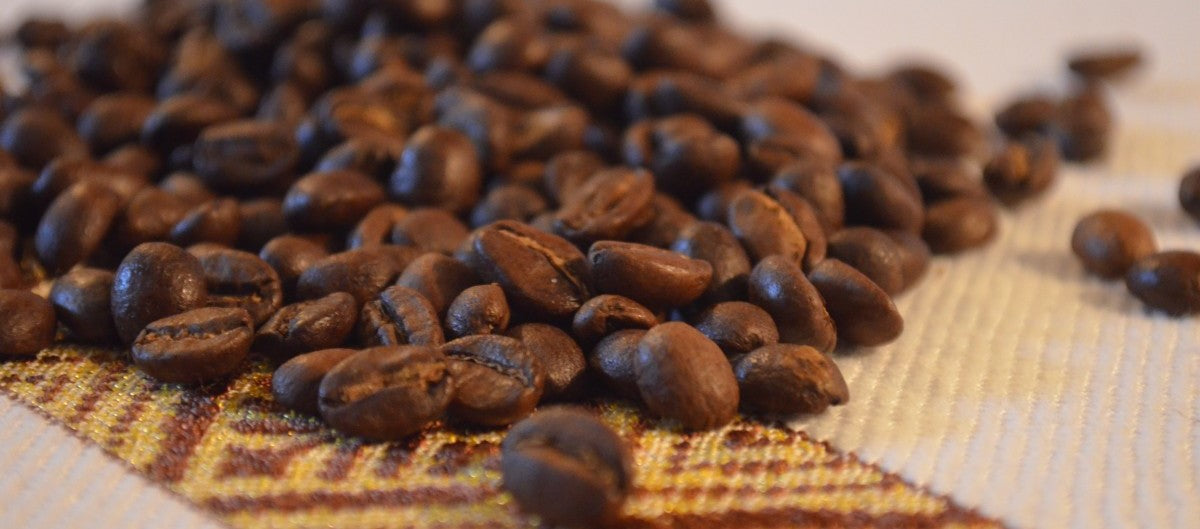Your Cart is Empty


As it is in many places today, coffee is a celebrated, aromatic part of daily life in Ethiopia. But for Ethiopians, coffee isn’t simply brain fuel or a beloved commodity—it is a fundamental part of their nation’s history and culture. The deliciousEthiopian coffees we serve at Harbinger today are part of this long tradition. Famously flowery with a fruity sweetness, the distinct flavor profiles of Ethiopian coffees are the product of the unique geography and climate in that part of Africa’s Horn.
There are more than 125 varieties ofCoffea Arabica L., which is today the most widespread species of what we know as coffee (the other species isRobusta, of lesser quality and grown mainly for instant coffee).
The progenitors of all of these species evolved in the highlands of present-day Ethiopia, with the plant’s ancestral fossils dating to the Eocene (55-34 million years ago).
At some point, a mutated gene provided for the production of caffeine, which served several purposes. Caffeine in the plant’s leaves warded off insect predators and discouraged local plant competition by leaching into the soil after the leaves fell to the ground. Meanwhile, smaller amounts of caffeine in the plant’s nectar gave pollinators a chemical reward for their visit. In this way, the coffee bush became an integral part of the Ethiopian forest ecosystem.
Legend tells of an Ethiopian goat herder, Kaldi, in the 9th century who one day observed his goats acting strange. They appeared to be frolicking and dancing, and did not sleep that night. He discovered they had eaten some red berries from a familiar bush. Kaldi tried a few of the berries himself, and reveled in their stimulating effect. He brought the berries to a monastery (Ethiopia was one of the first countries to adopt Christianity), where monks considered their energetic effects to be demonic. They threw the berries into the fire, but the delicious aroma drew a crowd of curious people looking for the source.
The aroma changed the monks’ opinion of the fruit, and they removed some of the fire-roasted berries, ground them, and added water to create the world’s first cup of coffee. But coffee drinking did not become widespread until the 15th century, when Yemeni traders had brought the dried berries from Ethiopia. Sufi practitioners in Yemen began brewing coffee to help them with religious concentration and to stay awake through nightly prayer rituals. This demand from the Arab world stoked the first cultivation of coffee bushes in Ethiopia; previously, the berries had simply been collected from wild plants.

From Yemen, the energizing drink spread to Istanbul, Egypt, and eventually Europe, creating worldwide demand for this Ethiopian plant. For centuries, the majority Christian population of Ethiopia refrained from drinking coffee, as it had come to be associated with the Muslim traders who brought it far and wide.
This began to change at the end of the 19th century, when even the Ethiopian Emperor Menelik drank coffee. The beverage took off in popularity during the 1880s, and Ethiopians developed daily coffee rituals and elaborate ceremonies to start important events. Today, these coffee ceremonies are a famous part of Ethiopian culture.

Ethiopia is currently the fifth-largest coffee exporter in the world, and the coffee industry supports about 25 percent of the country’s population.Up to 40 percent of Ethiopia’s coffee product is consumed domestically—the highest rate of coffee-producing African nations—with the rest going to the EU, East Asian and North American markets. Many of the country’s 4 million coffee farmers belong to cooperatives, such as the Nano Challa cooperative, formed in western Ethiopia’sAgaro region in 2010.
In other coffee-producing nations, such as Brazil, coffee is grown on large plantations using a variety of chemicals. Ethiopian coffee, however, is typically cultivated in a more traditional, artisanal style by individual farmers, without pesticides or other chemicals. This results in a uniquely flavored, higher quality and higher-priced coffee.
As in other coffee-growing regions, rising average temperatures are fueling outbreaks of coffee wilt and other diseases in southwest Ethiopia. Climate change, competition from other crops such askhat (another stimulating plant), and deforestation is shrinking the amount of land suitable for coffee. Without more aggressive countermeasures, by some estimates Ethiopia could lose as much as 60 percent of its suitable coffee-producing land over the next century. Despite current and future challenges, Ethiopian coffee varieties remain among the world’s finest and most in-demand.

Harbinger Coffee is proud to source and serve several coffees from Ethiopia when they're available.Sample a bit of coffee’s mystical, ancient origin story with a cup of delightful Ethiopian from Harbinger!
Sources for this post
USDA Report, Coffee Annual, Ethiopia
The Evolutionary Origins of Coffee (Curious Meerkat)
Alan Weinburg and Bonnie Bealer,The World of Caffeine: The Science and Culture of the World's Most Popular Drug (New York: Routledge, 2004).
Antony Wild,Coffee: A Dark History(2004).
National Coffee Association, “What is Coffee?”
Tesfaye Tadesse, Bizuayehu Tesfaye, Girma Abera, “Coffee production constraints and opportunities at major growing districts of southern Ethiopia,”Cogent Food and Agriculture6, no. 1 (2020).
Aaron P. Davis, “Building a climate resilient coffee economy for Ethiopia,” Kew (Royal Botanic Gardens),